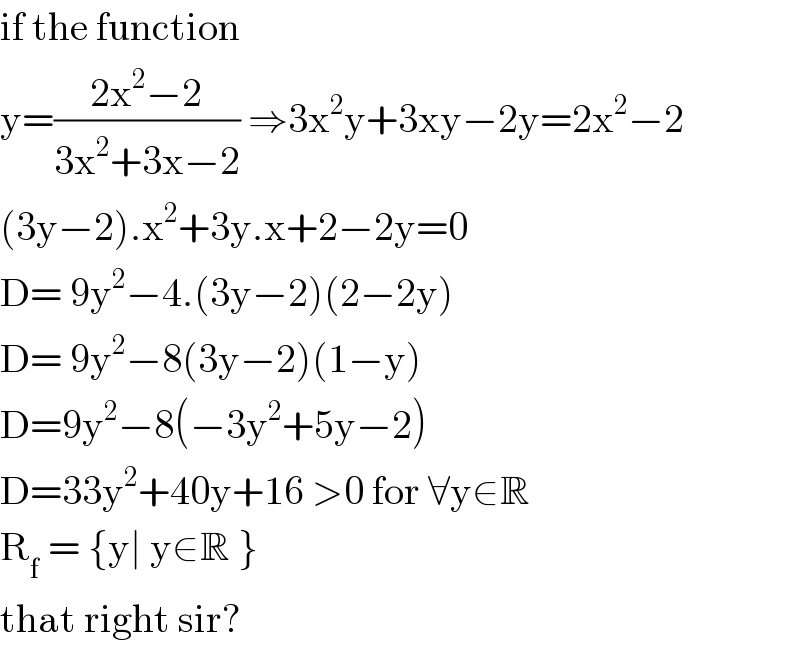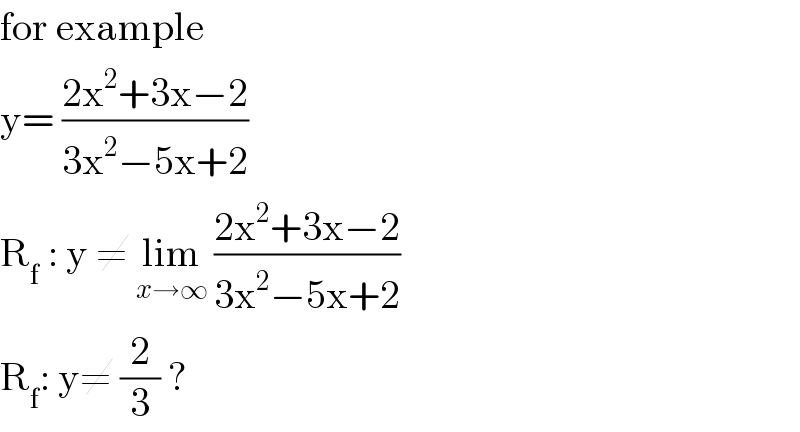
Question and Answers Forum
Previous in Relation and Functions Next in Relation and Functions
Question Number 79816 by jagoll last updated on 28/Jan/20

Answered by MJS last updated on 28/Jan/20
![y=((ax^2 +bx+c)/(px^2 +qx+r)) leads to x^2 +((qy−b)/(py−a))+((ry−c)/(py−a))=0 D=(((4pr−q^2 )y^2 −2(2ar−bq+2cp)y+4ac−b^2 )/(4(py−a)^2 )) D<0 ⇒ no real solution for x ⇒ no y exists the range then is R\[interval for y where D<0] same when p=0 which is your (ii)](Q79828.png)
Commented by jagoll last updated on 28/Jan/20

Commented by jagoll last updated on 28/Jan/20

Commented by jagoll last updated on 28/Jan/20

Commented by MJS last updated on 28/Jan/20
![y=((2x^2 −2)/(3x^2 +3x−2)) x^2 +((3y)/(3y−2))x−((2(y−1))/(3y−2))=0 [x^2 +Px+Q=0 ⇒ D=(P^2 /4)−Q] D=((33y^2 −40y+16)/(4(3y−2)^2 ))>0∀y∈R ⇒ range is R](Q79836.png)
Commented by MJS last updated on 28/Jan/20
![y=((2x^2 +3x−2)/(3x^2 −5x+2)) x^2 −((5y+3)/(3y−2))x+((2(y+1))/(3y−2))=0 D=((y^2 +22y+25)/(4(3y−2)^2 )) D<0 for −11−4(√6)<y<−11+4(√6) ⇒ range is R\]−11−4(√6); −11+4(√6)[](Q79839.png)
Commented by jagoll last updated on 28/Jan/20

Commented by jagoll last updated on 28/Jan/20

Commented by MJS last updated on 28/Jan/20

Commented by MJS last updated on 29/Jan/20

